The layout should be easy to transport, i.e. stable and lightweight. Therefore, an open frame construction with trackbeds was assembled. The lower frame is reinforced by crossed battens. The pre-cut outer stringers were inserted into the lower frame, thus defining the contour of the layout.
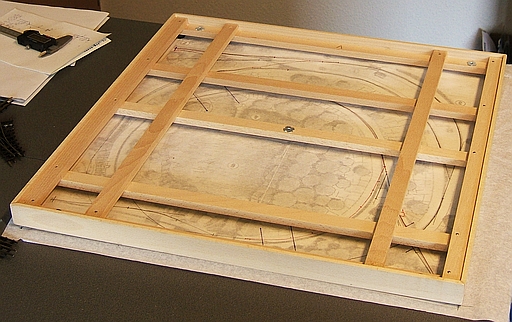
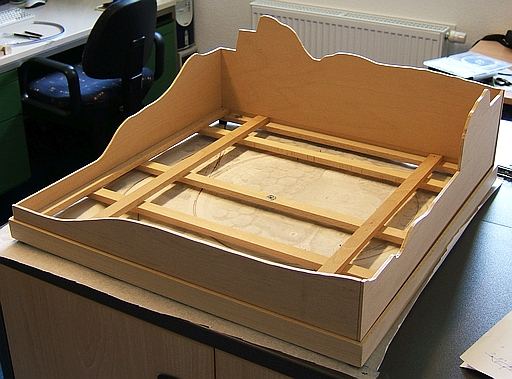
A cut-out for the control desk was added to the front, while an access to the tunnel was cut in the back. Trackbeds for the rails and all plain areas of the layout were brought to the appropriate height with small pieces of wood. For weight reasons, the remaining landscape surface was modelled from light Styrodur.
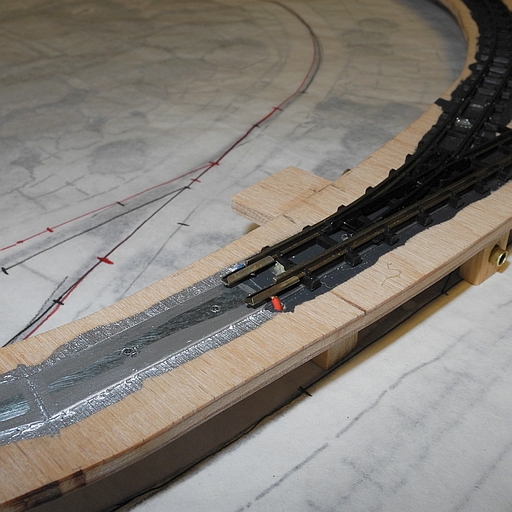
At planning stage, the track from the Busch range was not yet in sight. Therefore, H0f-flextracks and points from PMT were installed, resulting in a rather elegant track pattern. The Busch locomotives - rather light - use a magnet to enforce the pressure on the rails, necessary to increase friction and improve current collection. Therefore, sheet metal strips were glued between the track and the trackbed, with the strips coated by a zinc-based rust protection for safety's sake. After all, model landscaping is a rather damp affair.
The terrain was shaped by Styrodur insulation boards, which were glued between the wooden parts with wood glue. The surface was first roughly shaped with a knife and then with sandpaper (this really makes a mess!). The rocks were shaped using a wide variety of tools, from wire brushes to small screwdrivers, depending on whether a rather coarse or more structured broken surface had to be created. Areas where ground cover had to be placed later was given just a coat of brown tinting paint, while the rock areas were given their final appearance directly with various acrylic paints.
Analogue control is used for the locomotives, but pulse width modulation and electronic mass simulation ensure decent driving characteristics. To use more than one locomotive on the layout, sidings are switched off by the point settings and the right tunnel track can be used as a staging yard for one train. An automatic system lets a train shuttle back and forth between the terminal stations with stops at all stations - just sit back and watch. The position of the train is simply tracked via some reed contacts in the track, as the Busch locomotives already have a magnet installed.
Platform lamps and buildings are illuminated by individually dimmable LEDs. Lighting at the stations, workshop and kiosk can be switched individual. In addition, there are also background sounds, loading and unloading sounds for the tippers and bells and horn signals for the locomotives. Ideas for these gimmicks emerged little by little and go far beyond the originally intended functions of the control desk. Many special functions can therefore only be operated via a wireless remote control.

The trains are magnetically connected to the locomotives, while the individual wagons are coupled to each other with imitated coupling chains chosen by Busch for their models. Electrically liftable stoppers between the tracks allow the trains to be fixed and thus uncoupled. However, the stoppers can lift a missplaced axle out of the track, so they are lifted gently by an increasing PWM voltage. This way the process can still be cancelled if necessary.
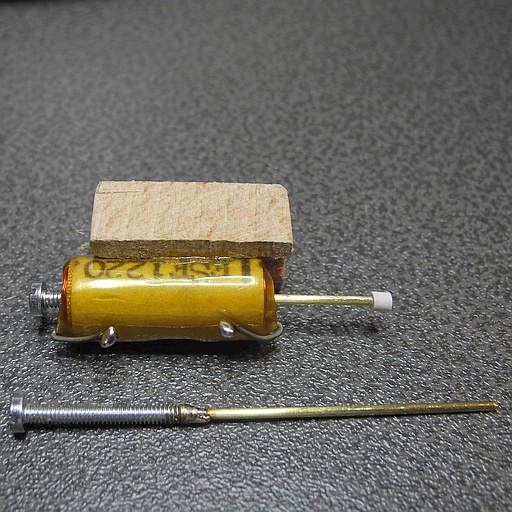
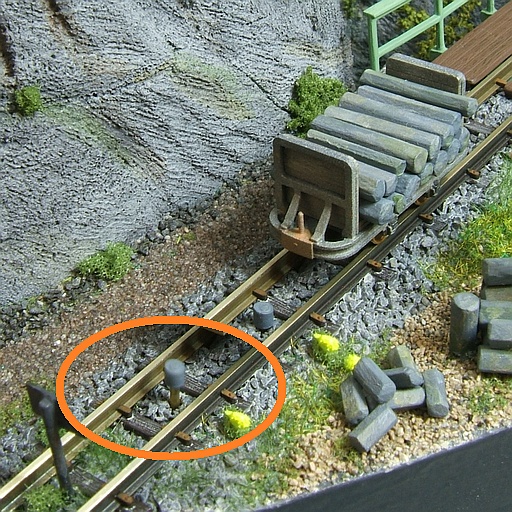
On the back, below Weilberg terminus, there is the tunnel track and the Stenzelberg staging yard. A magnetically closed opening gives access in case of malfunctions or to change rolling stock when the dust cover is on.

Most of the time the layout is placed on a sideboard in my home office, where it can be operated from two sides. The inevitable dust is kept out by a cover made of colourless 5 mm plexiglass. Thanks to its good transparency, the cover remains on the system even during operation and guarantees months of driving pleasure without need of cleaning. A picture of the Rhine valley with Drachenfels and Drachenburg printed on canvas provides a suitable background.
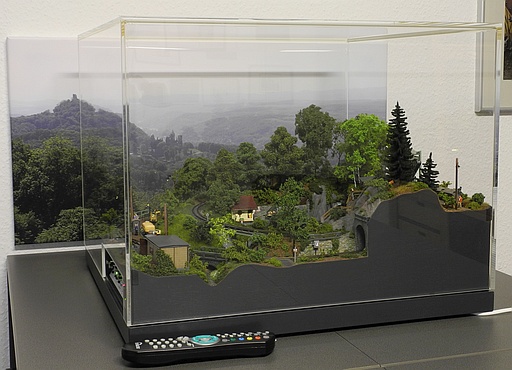
Since there were requests from train shows, an exhibition stand was constructed to present the layout in its best light and at a suitable height.
The premiere was on 25/26 February 2023 at the model railway exhibition of the "Modellbahn-Arbeitsgemeinschaft Kaarst". Here you can find a review also with moving pictures. Since then, the WBB has also been on display in Jülich, Wuppertal, Gangelt and at Schmalspur-EXPO 2024 in Bruchhausen-Vilsen.
More dates may follow, please watch for announcements on the homepage.
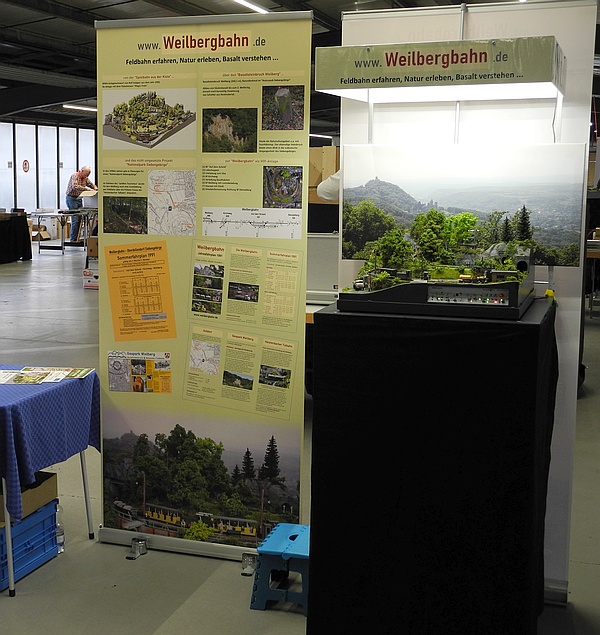
Updated: 09.10.2024. This website presents the model railroad "Weilbergbahn" by Wulf Pompetzki, Duisburg, Germany. Please send enquiries and suggestions to: 